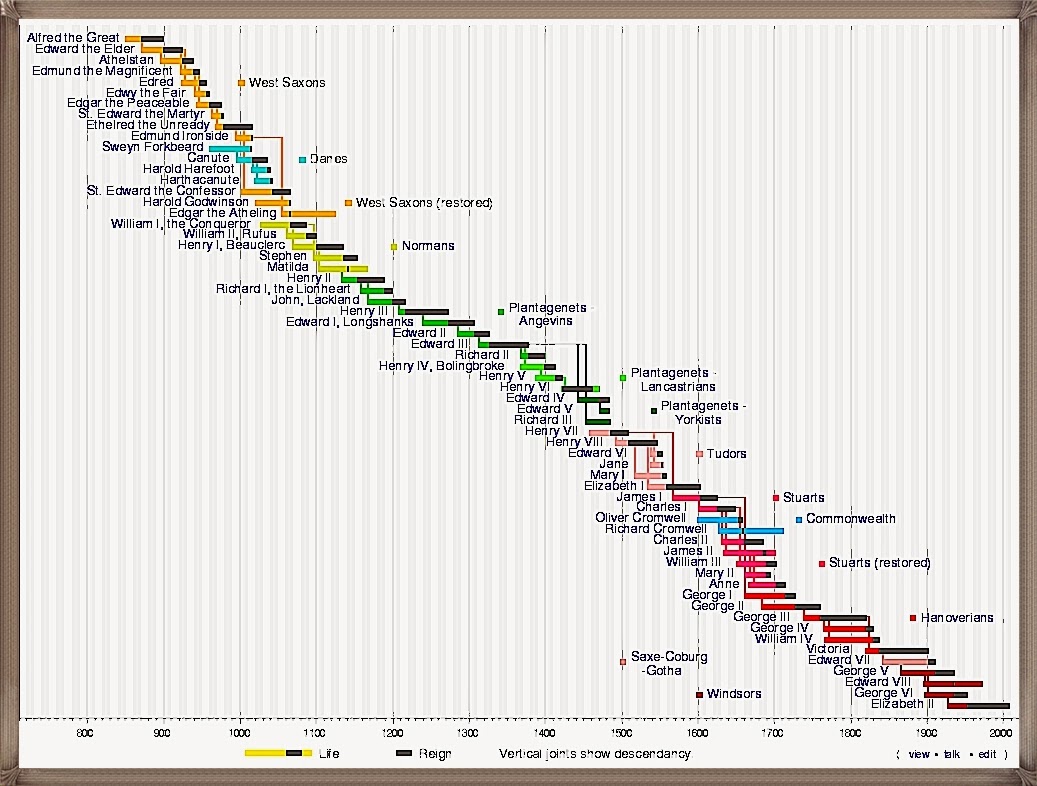The history of the English monarchy is a captivating saga filled with triumphs, trials, and transformations. From the early days of William the Conqueror to the present reign of Queen Elizabeth II, the timeline of kings of England encapsulates a remarkable journey through time. Each monarch has left an indelible mark on the nation, influencing its culture, politics, and society. Understanding this timeline is essential for anyone interested in the evolution of England and its monarchy.
As we delve into the king of England timeline, we uncover not only the significant events that shaped the monarchy but also the personal stories of the kings themselves. Their lives were often intertwined with the fate of the nation, and their legacies continue to resonate today. The timeline serves as a lens through which we can examine the changing values, challenges, and aspirations of the English people across centuries.
From the establishment of a unified England to the challenges of civil wars and the impact of the Industrial Revolution, the king of England timeline offers a comprehensive overview of a pivotal aspect of British history. Join us as we explore the reigns, the significant events, and the transformative moments that define this rich narrative of kingship.
What is the Early History of the Kings of England?
The history of the Kings of England begins with the establishment of the English crown in the early medieval period. The timeline kicks off with the reign of King Æthelstan, who is often regarded as the first King of England, reigning from 924 to 939 AD. His leadership marked a pivotal moment as he successfully unified various Anglo-Saxon kingdoms into a single entity.
Who Were the Notable Kings in the Timeline?
The king of England timeline is filled with notable figures, each contributing uniquely to the country's history. Some of the most significant monarchs include:
- William the Conqueror (1066-1087): The first Norman king who brought about profound changes in England.
- Henry VIII (1509-1547): Known for his six marriages and the English Reformation.
- Elizabeth I (1558-1603): The last Tudor monarch whose reign is often considered a golden age.
- Charles I (1625-1649): His conflict with Parliament led to the English Civil War.
What Were the Key Events in the King of England Timeline?
Throughout history, several key events have shaped the monarchy and the nation. Some of these events include:
- The Battle of Hastings (1066): William the Conqueror's victory changed the political landscape of England.
- The signing of the Magna Carta (1215): This document limited the powers of the king and laid the foundation for modern democracy.
- The English Civil War (1642-1651): A pivotal conflict that challenged the monarchy's authority and led to the temporary abolition of the crown.
- The Glorious Revolution (1688): Marked the transition to constitutional monarchy and the establishment of parliamentary sovereignty.
How Did the Monarchy Change Over Time?
The king of England timeline reflects significant changes in the monarchy's role and power. Initially, monarchs wielded absolute authority, but over time, power shifted towards parliamentary governance. The evolution of the monarchy has been shaped by various social, political, and economic factors, including the rise of democracy and the growing influence of public opinion.
What Role Did the Monarchy Play in the Modern Era?
In the modern era, the monarchy has transformed into a symbolic institution. The king of England timeline illustrates how the monarchy adapted to changing societal norms and expectations. Today, the royal family represents continuity and tradition while engaging with contemporary issues such as charity work, mental health awareness, and environmental conservation.
What Is the Legacy of the Kings of England?
The legacy of the kings of England is multifaceted, encompassing contributions to culture, law, and governance. Monarchs like Henry VIII and Elizabeth I left indelible marks on English literature, religion, and politics. Their lives and reigns continue to be studied and celebrated, highlighting the enduring fascination with the English monarchy.
What Can We Learn from the King of England Timeline?
Studying the king of England timeline provides valuable insights into the complexities of leadership, governance, and societal change. It serves as a reminder that history is not merely a series of events but a tapestry woven with human experiences, decisions, and consequences. By exploring this timeline, we gain a deeper appreciation for the resilience of the English people and the evolution of their monarchy.
Conclusion: The Significance of the King of England Timeline
In summary, the king of England timeline is a vital component of British history, illuminating the evolution of the monarchy and its impact on society. From the early kings to the modern royal family, each chapter of this timeline offers a glimpse into the past and a reflection on how history shapes our present. By understanding this timeline, we not only honor the legacy of those who came before us but also gain perspective on our own place in the ongoing story of England.
| Name | Reign | Notable Achievements |
|---|---|---|
| William I | 1066-1087 | Conquered England, established Norman rule. |
| Henry VIII | 1509-1547 | Initiated the English Reformation. |
| Elizabeth I | 1558-1603 | Golden age of English literature and exploration. |
| Charles I | 1625-1649 | Conflict with Parliament led to civil war. |
Unraveling The Mystery Behind "Show Me The Money Money"
Exploring The Lives Of Famous People That Live In NY
Unveiling Emma Chamberlain's Net Worth: The Rise Of A Digital Icon


